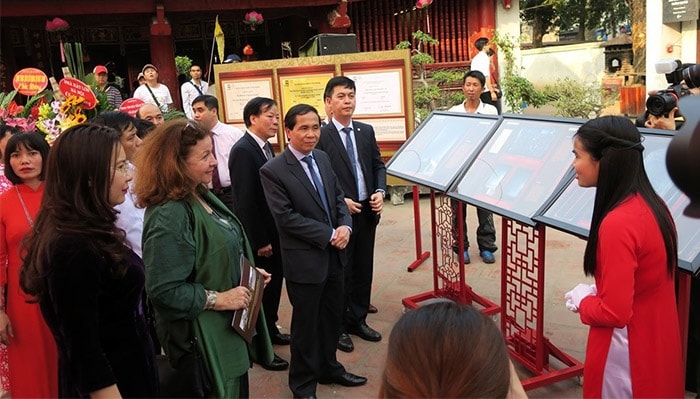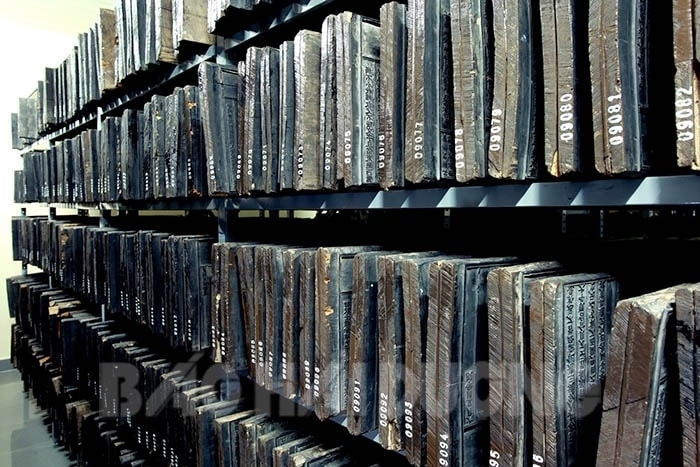Skillful Hai Duong artisans carve Nguyen dynasty woodblocks
Culture - Sports - Tourism - PublishedTime : 15:49, 20/09/2021

Introducing woodblocks of the Nguyen dynasty at the exhibition "Vietnam's feudal exams through world documentary heritage"
According to research results, it is hypothesized that woodblocks first appeared in Vietnam in Luy Lau (now Thuan Thanh, Bac Ninh) in the 1st century. However, not until the 15th century, under the Le dynasty, did woodblock carving and printing really develop in Vietnam.
It began with Academician Luong Nhu Hoc learning woodblock carving and printing techniques from his trips to China during the Ming dynasty as the king’s envoy and transmitting them to people in Hong Luc and Lieu Trang villages, Gia Phuc district, now Tan Hung ward, Hai Duong city.
Hong Luc and Lieu Trang were two famous block carving villages of the country under feudalism. Luong Nhu Hoc was honored as the printing founder of the villages.
Continuing the tradition taught by the printing founder, from generation to generation, skillful artisans in Hai Duong formed many book and carving guilds.
After the official establishment of the royal dynasty in Nham Tuat year (1802), Nguyen kings paid special attention to culture, especially history; thus, woodblock carving and printing in Hai Duong even more developed.
Under the Nguyen dynasty, to make this special document, the National Historiographer’s Office had to select skillful carvers from all over the country.

The woodblock preservation warehouse at the National Archives Center IV
According to the woodblocks of the continuation of the book Kham Dinh Dai Nam Hoi Dien Su Le (Compendium of Institutions and Administrative Cases of Dai Nam Established by Imperial Order), the majority of skillful carvers under the Nguyen dynasty were from Bac Ky, among them, Hai Duong artisans accounted for the most number with the best skills.
Hai Duong artisans carved and printed books of major civil and military mandarins. For example, under the reign of King Gia Long, chief of Hai Duong province, Marquis An Quang Tran Cong Hien, who advocated the establishment of Hai Hoc Duong (Hai Hoc Print-shop), had 12 volumes of Tung Thu Danh Thi Hop Tuyen (Anthology of Famous Poems) carved and printed.
After the establishment of Hai Hoc Duong, more and more duong appeared for book engraving and printing.
Hai Duong woodblock carvers were also invited to the capital to engrave major national historical books of the royal dynasty as well as other important historical books of some neighboring countries.
To date, the documentary heritage of woodblocks of the Nguyen dynasty has really become a royal treasure greatly contributing to the transmission of invaluable historical treasures for future generations to learn about the origin and development history of the Vietnamese nation.
CAO QUANG
